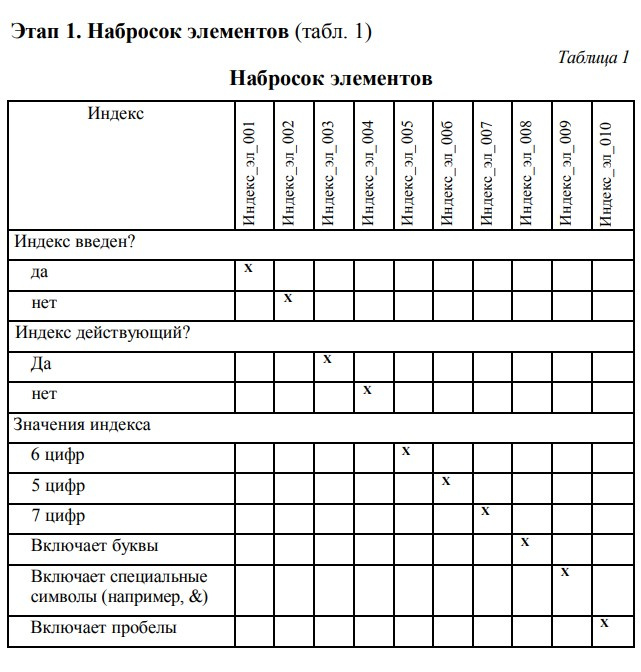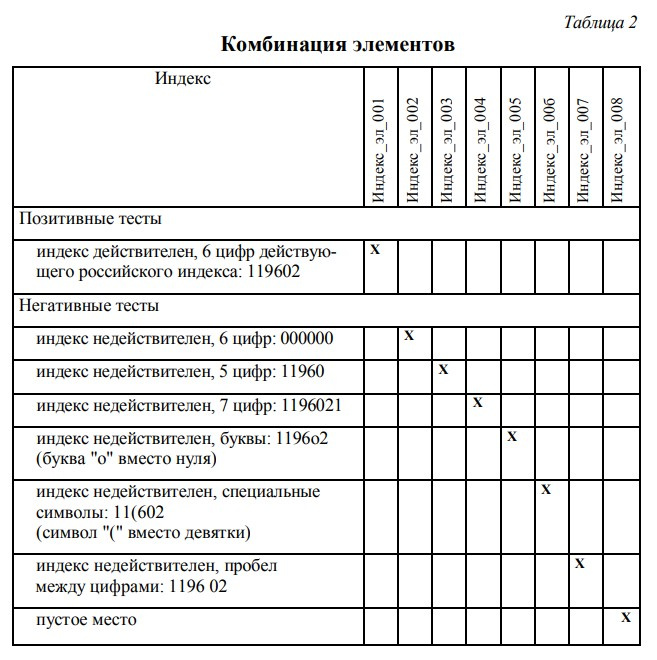Answer the question
In order to leave comments, you need to log in
Question about Roman Savin's book "Testing dot com"?
I have a content question:
See page 204 for an example of using the breakpoint method based on table 1 on page 180.
"Example
Let's take an index that should be 6 digits (Index_e_005 from Table 1, Matrix Layout of the Index field). We

apply the boundary value testing method: a.6 b.6 c.6 d.5 e.7
Thus
,
we
have:
• one positive test 6 and
• two negative tests
5
and 7."
Why is only a left of a, b, c?
I understand that the boundary value method does not take into account various negative cases? For example, entering a letter.
Then the question is, why did the author apply the boundary value method in this situation, if he covered only half of what needs to be checked with this method? After the matrix layout and combination of elements (Table 2), it is quite convenient to compose test cases.

If the question is already a strong amateurish one, then I ask you to treat it with understanding, because just started pouring in.
Answer the question
In order to leave comments, you need to log in
Because the values a, b, c are equivalent, and in order not to create tests for each equivalent value, equivalence classes are used.
Conclusion: Read about equivalence classes.
The boundary value method tests exactly the boundaries. If the reference value is 6, then the boundary itself (6) and the minimum values bordering it are tested (if we are talking about integers, then 5 and 7).
Conclusion: If we are talking about checking boundary values in a numeric field that can contain 6 digits, the closest values and the boundary itself are checked. Negative tests with letters, in this example, are not performed.
Didn't find what you were looking for?
Ask your questionAsk a Question
731 491 924 answers to any question